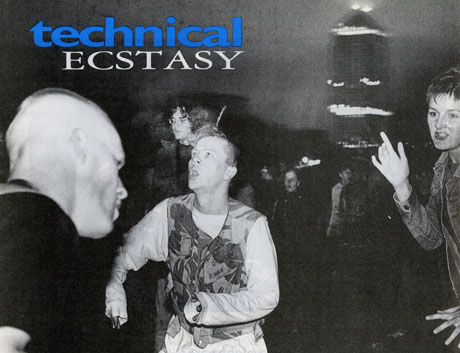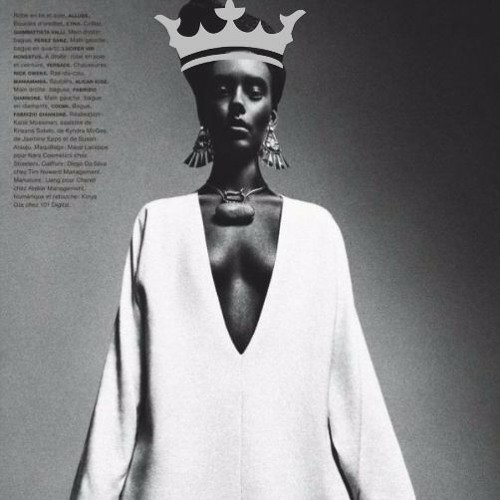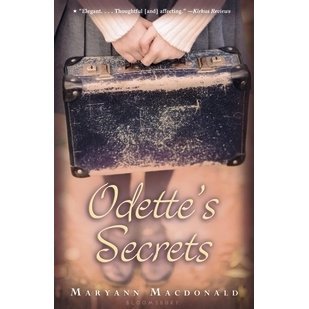original post here – https://www.thewire.co.uk/in-writing/essays/the-wire-300_simon-reynolds-on-the-hardcore-continuum_1_hardcore-rave_1992_
Written by the man behind Energy Flash – which you should definitely get a copy of

Originally published as “Technical Ecstasy” in The Wire #105 November 1992.
“See my face, not a trace, no reality/… I just speed/It’s all I need” – Johnny Rotten/Sex Pistols, “Seventeen”, 1977
“Rush your fuckin’ bollocks off” – MC Scallywag/Spiral Tribe, “Doet” , 1992
“Too much speed is comparable to too much light… we see nothing” – Paul Virilio, Pure War
The Aesthetic Of Disappearance
When British youth first encountered the term Acid House they misconstrued it. In Chicago, acid came from ‘acid burn’, slang for ripping off someone’s idea (by sampling it). But in Britain, it was assumed that ‘acid’ meant psychedelics. So acid house became the soundtrack to the Ecstasy rave-olution, and another classic example of British youth misrecognising and remotivating a black American music. Hardcore Techno has reversed the drugs/music nexus: after four years of rave culture, the music has evolved into a science of inducing and amplifying the E rush. The vibe has changed (from trance-dance to mental-manic) as Ecstasy has become adulterated with amphetamine, or replaced by pseudo-E concoctions of speed, LSD and God knows what. Chemicals have directly altered the subculture’s metabolism, with the beats per minute (last count: 140-150 bpm) soaring in sync with pulse rates and blood pressure levels.
E and LSD activate the fight or flight sector of the brain. In combination with amphetamine, the result is an edgy exhilaration on the borderline of panic reaction: “are you feeling w-w-w-wobbly???”, Xenophobia’s “The Wobbler” enquires rhetorically. Ardkore is just another form of fin de siecle ‘panic culture’: hence the frequent samples of sirens, the ambuscades of sound, the MC chant “comin’ at ya!”. There’s even a track titled “Start The Panic”. But then in Greek, panic’s original meaning was a transport of ecstasy. Speedy E has changed the whole vibe of rave culture, from celebration to a sort of aggressive euphoria. The urge to merge and the urge to surge fuse in a raging oceanic feeling. Dancers’ faces are contorted with weird expressions midway between a snarl and a smile, or glare with a crazed, blazing impudence.
It’s the most brazenly druggy subculture in eons, even less coded than acieed. Pirate DJs send out a big shout to “all you nutters rushing out of your heads, speedfreaks out there, you know the score” or holler ”yes London town, absolutely flying in the studio, 100 mph”. Are drugs essential to get into this music, as Ardkore’s detractors claim? Well, they certainly help hype your metabolism to the necessary frenetic pitch. But once your nervous system has been re-programmed, you can listen to this stuff ‘on the natural’. On its own, it’ll induce memory rushes, body-flashbacks.
Speed has mutated (some say, perverted) rave music’s development, unbalancing it at both the top and bottom ends of the sound-spectrum. Ardkore is all ultra-shrill treble and bowel-quaking bass. Voices are sped up to a 78 rpm, Pinky & Perky shriek, whether they’re samples of ethereal girls like Kate Bush, Lisa Gerrard, Liz Cocteau or Stevie Nicks, or helium-ised eruptions of black voice. Closer to fireworks than ‘soul’, these vocals have been hurtled beyond expression into the realm of abstract urgency, outside the syntax of desire. Sampled and modulated on a keyboard, they become a barrage of intensities without pretext or context, shudders and shivers that are not so much inhuman as infra-human. Incantations from roots reggae are snatched from their cultural context to become animated hieroglyphs. Ragga chants add a grainy insolence that’s perfect for Ardkore’s ruff and tuff uproar. Dub bass impacts your viscera, its alien metre placed outrageously amid accelerated hip hop breakbeats at twice reggae’s pace. Having ‘swallowed hiphop whole’, Ardkore’s syncopation is a radical break with the programmed machine rhythms of early UK Techno. The electronic side of Techno has degenerated into stray smears of acieed bass, pulsation-loops derived from Joey Beltram’s “Energy Flash” and “Mentasm”, fucked up concatenations of blaring samples, and octave-skipping synth riffs whose function is not melodic but textural. And of course, the sheer speed of their oscillation accentuates the sense of headlong RUSH.
At raves and clubs, or on pirate stations (like Touchdown 94.1 FM, Defection, Pulse, Rush), DJs compact rough and ready chunks of tracks into a relentless but far from seamless inter-textual tapestry of scissions and grafts. It’s a gabbling fucking mess, barely music, but as it swarms out the airwaves to a largely proletarian audience, you know you’re living in the future. ‘Trash’, but I luvvit.
It’s a mistake to appraise Ardkore in terms of individual tracks, because this music only really takes effect as total flow. Its meta-music pulse is closer to electricity than anything else. Ardkore has abandoned the remnants of the verse-chorus structure retained by commercial rave music. At the Castlemorton Common mega-rave in May, MCs chanted “we’ve lost the plot”. Ardcore abolishes narrative: instead of tension/climax/release, it offers a thousand plateaux of crescendo, an endless successions of NOWs. It’s an apocalyptic now, for sure: Ardkore fits only too well the model of terminal culture that Paul Virilio prophesies in The Aesthetics Of Disappearance: “a switch from the extensive time of history to the intensive time of momentariness without history”. This emergent anti-culture of instantaneity will be inhabited by a new breed of schizophrenic subject, whose ego is “made up of a series of little deaths and partial identities”.
No narrative, no destination: Ardkore is an intransitive acceleration, an intensity without object. That’s why the MC patter sounds more appropriate for a rollercoaster than music – “hold tight”, “let’s go”, “hold it down” – and why Techno is all you’ll hear at fairgrounds these days. Does this disappearance of the object of desire, this intransitive intensity, make Ardkore a culture of autistic bliss? Certainly, sex as the central metaphor of dancing seems remoter than ever. Rave dancing doesn’t bump and grind from the hip; it’s abandoned the model of genital sexuality altogether for a kind of polymorphous perverse frenzy. It’s a dance of tics and twitches, jerks and spasms, the agitation of a body broken down into individual components, then re-integrated at the level of the entire dancefloor. Each sub-individual part (a limb, a hand cocked like a pistol) is a cog in a collective desiring machine. Which is why dancers so readily pick up moves from each other. The dancefloor’s like a primal DNA soup. It’s pagan too, this digital Dionysian derangement whose goal is to find asylum in MADNESS. (Hence the slang of “mental” and “nutty”, sound systems with names like Bedlam, groups with names like Lunarci, MCs chanting “off my fucking tree” – pejoratives turned into desirable states of mindlessness).
[page break]
It’s emotionally regressive too (as all the musically progressive genres of the last decade – rap, oceanic rock, Noise – have been): hence the infantilism of ravers sucking on dummies, or bubblegum chart hits like “A Trip To Trumpton”, “Sesame’s Treet”, The Prodigy’s “Charly”. But then Virilio reminds us that “child-society frequently utilises turnings, spinning around, disequilibrium. It looks for sensations of vertigo and disorder as sources of pleasure”. He cites Jacques-Henri Lartigue’s childhood game of spinning round and round, in order to create “a dizziness that reduced [the] environment to a sort of luminous chaos”.
Virilio’s book is a jeremiad about an emergent culture based around ‘picnolepsy’, his term for frequent, incredibly brief ruptures in consciousness. ‘Picnolepsy’ is a take on epilepsy, which Webster’s defines as a disorder “marked by disturbed electrical rhythms of the central nervous system and typically manifested by convulsive attacks usually with clouding of consciousness [my italics]”. Epilepsy was a sacred malady for the Greeks. Ardkore is poised somewhere on the brink between picnolepsy and epilepsy. We all know how strobes (the staple of rave lightshows) can cause convulsions. Ardkore is the aural analogue of a strobe, a sequence of frozen stop-gap soundbites that have been artificially re-animated with E-lectricity.
Virilio could be writing about the rave scene in 1992: “with the irregularity of the epileptic space, defined by surprise and an unpredictable variation of frequencies, it’s no longer a matter of tension or attention, but of suspension pure and simple (by acceleration), disappearance and effective reappearance of the real, departure from duration”. This is the feeling that The KLF caught with the title (if not the sound) of “3 AM Eternal”. Speed reproduces the effects of picnolepsy, a “perpetually repeated hijacking of the subject from any spatial-temporal context”. You’re gone, totally out of it. And there’s more: a warning sign for epileptics of an imminent attack was “a special state of happiness, a juvenile exhilaration”. “Sublime”, wrote Dostoevsky, a sufferer, “for that moment you’d give your whole life… At that moment I understood the meaning of that singular expression: there will no longer be time”.
This juvenile ‘nihilism’ is the reason why Ardkore perturbs so many. This music is best understood as a neurological, not cultural phenomenon. It abolishes the role of cultural mediators. Textless, it offers little to interpret in itself (its subcultural ‘text’ resides in its effects). Critics who like to deal with rock ‘n’ roll as a surrogate form of literature are the most threatened by this anti-humanist noise, which is closer to a power source or intoxicant than poetry. But Ardcore also challenges those who’ve seized on the more musicianly participants in rave music to argue the case for House and Techno as art forms. There is a prejudice against one-dimensional music. It’s both amazing and amusing to see how exactly the same rhetoric used by detractors of Fifties rock ‘n’ roll, recurs as a knee-jerk tic amongst rock fans when they’re faced by a new ‘barbaric’ ‘non-music’. Along with the racist notion of ‘jungle music’ (by happy coincidence, one of Ardcore’s big sub-genres this year was ‘Jungle’), one of the things most feared about rock ‘n’ roll was its extreme repetitiveness. Which is exactly what the anti-Ardkore enclaves bemoan. Repetition is a psychoactive agent in itself, of course. Anyway, to those who insist that Ardcore “just isn’t music”, I won’t argue. I couldn’t care less. But I do know that every new development in pop – from punk to rap to acid House – has initially been greeted with such spasms of fear and loathing.
The New Heavy Metal
In the late 1960s and early 70s, British groups bastardised the blues, and their American imitators bastardised their bastardisation, and between them they spawned Heavy Metal. In the late Eighties, black Europhiles from Chicago and Detroit took Teutonic electronic music and turned it into acid House and Techno; in the early Nineties, British youth took these styles and birthed a mutant, bastard form called Ardkore. Veterans of 1988’s First Wave of Rave denounce Ardkore in exactly the same language that counter culture vets decried Metal – as soulless, macho, bombastic, proto-fascist, a corrupt and degraded version of a once noble tradition. They’ve even called Ardkore “the new Heavy Metal”. With the same piety that people once harked back to Cream and deplored Sabbath and Led Zep, similarly, rave cognoscenti mourn Derrick May and flinch from the brutalism of Beltram and 2 Bad Mice. In an unfortunate echo of Prog rock, some have even erected the concept of ‘progressive House’ (The Future Sound Of London, The Orb, Guerilla Records) as a bulwark of good taste against the hooligan hordes of Ardkore. Well, history shows us that the despised Black Sabbath subsequently went on to be perhaps the biggest influence on alternative rock in the Eighties and Nineties (from Black Flag through Butthole Surfers to Seattle grunge), while Jethro Tull, ELP and Pink Floyd went on to influence practically nobody.
‘Maturation’ was always only one possible route of development for the music of the post-acieed diaspora. Like Heavy Metal did with blues rock, Ardkore has taken the essence of Acid House and Techno – mindless repetition, stroboscopic synths, bass-quake frequencies – and coarsened and intensified it. As with Metal, bad drugs (barbiturates then, dodgy E now) have helped them focus on that essence. To an extent, Ardkore does present a spectacle of degraded avant-gardism, of arrested futurism: headless chickens running wild with avant-garde techniques (timbral/textural/spatial invention rather than melodic/harmonic development, drone theory, extreme repetition/extreme randomness, musique concrete etc) but not really knowing how to build with them. But Ardkore advances not through the innovations of auteurs, but rather evolves through mutation: inspired errors and random fucking about produce new riffs and noises that succeed in the dancefloor ecosystem and then enter the gene pool. Which explains why, whenever someone does come up with a new idea, it’s ripped off a thousand times. Anyway, I wager that those looking for the next revolution would do better to watch for what crawls out of the Ardkore morass than to carry a torch for Detroit, LFO or Orbital (as inspired as they’ve all been in their day).
The Politics Of Disappearance
Ardkore is really just the latest twist on the traditional contours of working class leisure, the latest variant on the sulphate-fuelled 60 Hour Weekend of mod and Northern Soul lore. With Ardkore, the proletarian culture of consolation has become a culture of concussion: hence amnesiac/anaesthetic slang terms for a desirable state of oblivion such as “sledged” (as in “sledge hammered”), “mashed up”, “cabbaged”, “monged”, and song titles like “Blackout” and “Hypnoblast”.
There’s a sampled slice of rap at large in Ardkore that goes: “Can’t beat the system/Go with the flow”. On one level, it’s just a boast about how much damage the sound system can inflict. But perhaps there’s a submerged political resonance in there too: amidst the socio-economic deterioration of a Britain well into its second decade of one party rule, where alternatives seem unimaginable, horizons grow ever narrower, and there’s no constructive outlet for anger, what else is there left but to zone out, go with the flow, disappear?
But retreatism is just one side of the rave scene. There’s an inchoate fury in the music that comes out in an urge for total release from constraints, a lust for explosive exhilaration – captured in titles like “Hypergasm”. The Ragga chant of Xenophobia’s “Rush In The House” kicks off “E come alive! E come alive! E come alive!” Ardkore frenzy is where the somnambulist youth of Britain snap out of the living death of the 90s, and grasp a few moments of fugitive bliss. Ardkore seethes with a RAGE TO LIVE, to cram all the intensity absent from a week of drudgery into a few hours of fervour. It’s a quest to reach escape velocity. Speed-freak youth are literally running away from their problems, and who can blame them?
Advertisements Share this:




